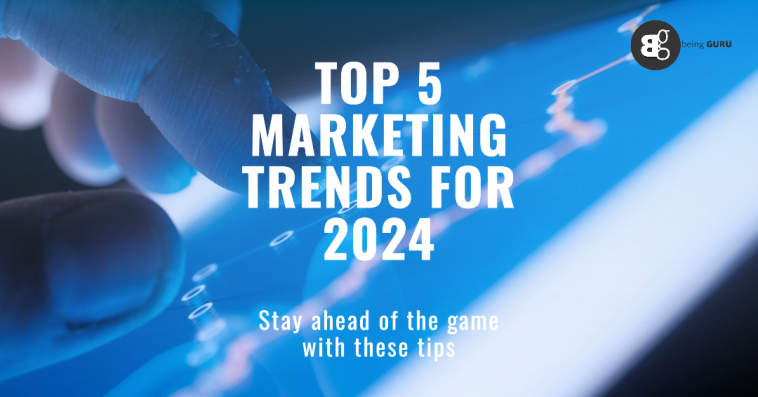The creative economy is growing and demonstrating its value to global businesses. US firms are expected to spend $7.14 billion on influencer marketing this year, according to Sprout Social. There’s no denying that creator marketing is at its pinnacle right now. Here are five key trends that are reshaping the industry this year, whether you work as a marketer, artist, or brand manager.
1. Authenticity Over Polished Content
Customers are becoming increasingly frustrated with conventional advertising strategies and prefer genuine content over well-produced stuff. According to recent data from Forrester, 71% of American customers think they can relate to and want to support authentic companies. This trend is apparent with the growth of producers and influencers on social media.
Real-life moments and unprocessed photo dumps are taking the way of the period of meticulously planned Instagram feeds. It’s obvious how things have changed from influencer Hailey Bieber to mothers like Jaclyn Gibson. Real stories and unvarnished narratives are becoming more and more important for brands to engage with consumers.
More for you: 10 Digital Marketing Trends Marketers Need To Look Out For In 2024
2. UGC Creators: From Hobbyists to Professionals
User-generated content (UGC) is beginning to take shape as a real profession. The epidemic accelerated the rise in demand for premium, on-brand content, which was further spurred by brands adjusting to lockdown constraints. Growing the market for short-form video content on social media sites like Instagram Reels and TikTok has led to a new category of creators known as UGC Creators. These people are revolutionizing video creation outside of regular production shots by specializing in the creation of captivating content.
A new generation of UGC creators shares advice on landing brand partnerships on sites like TikTok, while seasoned pros offer a peek at successful careers. These videos, which include “How I Made $4,000 in 10 Hours” and “How to be a UGC Creator in 2024,” feature seasoned UGC workers who have made a living by producing material only for businesses. UGC creators don’t need a large following as traditional influencers do; marketers work with them only because of their talent for creating content. With minimal entry barriers and platforms like Cohley and Aspire connecting individuals with companies, UGC careers are booming.
More for you: Instagram Marketing Strategy in 2024 | Social Media Marketing
3. Brands Bringing Content Creation In-House
Put your freelance troubles behind you! Companies are bringing in-house content makers and social producers to handle content development. Content production outsourcing can be difficult, requiring time-consuming procedures like identifying talent and creating creative briefs. Revisions frequently follow if a contracted content creator doesn’t meet the brief exactly the first time. Companies that have in-house social media producers and content creators will be ahead of the curve.
For example, by using its pages as recruitment tools, Cisco is turning its more than 84,000 employees into “talent influencers” on LinkedIn. Leading this calculated action is Kelly Jones, the Chief People Officer of Cisco, who understands that people have greater faith in one another than in businesses. Similar to how consumers favor products recommended by influencers or peers, job seekers are more inclined to apply to a company if they hear positive feedback from its staff. Considering that 57% of job seekers use social media to look for new opportunities, it makes sense to position staff members as brand ambassadors.
Thanks to an in-house creator, the iconic mall pretzel brand Auntie Anne’s has an enormous presence on TikTok. By responding promptly to events, this creator enables the brand to stay relevant to its audience by capitalizing on social media trends in real-time. Because they completely dedicate themselves to the brand, in-house creators provide special benefits and produce content that is consistently on-brand. Realizing that no one knows a brand better than its employees, brands take direct control over quality.
More for you: How Short Videos & User-Generated Content Impacts Marketing?
4. Creator-Led Campaigns Are In
The appeal of paid advertisements is declining. Throughout the course of my twelve years as a social media leader, I have discovered that brands are heavily allocating funds from paid advertising to creator-led campaigns. This trend indicates that in an effort to increase brand awareness and engagement, brands are working directly with creators or through specialized agencies, such as those managing TikTok campaigns. Additionally, they are officially endorsing and promoting creator content through their channels by “whitelisting” it. This benefits both the influencers and the brands they collaborate with.
Creator-led campaigns are more than just a fad; they signify a dramatic change in the way that brands interact with consumers online. This is supported by Creator IQ data, which emphasizes how successful and efficient influencer-driven campaigns are in comparison to traditional advertising. Similarly, a noteworthy trend was found in Aspire’s report: 69% of marketers plan to increase their investment in influencer marketing by 2024. The change is obvious: collaborate with creators to increase return on investment and decrease client acquisition expenses in the face of growing ad expenses and decreasing visibility.
Now is the perfect time for marketers, small business owners, and creators to shift towards creator-led campaigns as influencer marketing spending eclipses social ad spending. In order to remain ahead of the curve in the ever-changing world of creator marketing in 2024, it is critical to comprehend and adjust to these trends.
More for you: My ‘4’ Principles of Marketing Strategy: How to Succeed in Business
5. Brands Supercharge Ambassador & Affiliate Programs
This year, brands should prepare for a revolutionary change in affiliate programs. As the affiliate market continues to grow at a rate of ten percent annually, it is predicted that by 2030 it will reach $40 billion. The days of depending only on coupon websites are long gone; instead, brands are taking charge by establishing internal affiliate programs that increase consumer loyalty.
Consider the DTC brand SlumberPod, which was featured on Shark Tank. A wide range of creators, including parents, consultants, and sleep coaches, are part of their affiliate program. They all work under an affiliate agreement in exchange for free products. Since launching their initiative, the brand has developed a successful influencer program that brings in money. Of the more than 300 creators that are active, half publish regularly and receive monthly commissions. The success of this revenue-generating influencer program is demonstrated by the seven-figure sales that the influencer discount codes alone have produced.
Reputable DTC companies such as Parade, Coterie, and MVMT have also embraced in-house creator and affiliate programs, providing clear, performance-based incentives to draw in high-caliber partners. With this economical approach, brands can interact with communities and target specific demographics while rewarding partners who have similar interests. These alliances, which can be value- or commission-driven, produce a win-win situation that advances both the partner and the brand.
More for you: 12 Content Marketing Hacks to Increase Your Traffic and Leads
Conclusion
In 2024, creator marketing will change. Professionals are becoming hobbyists, and sincerity is more important than perfection. Recognizing the value of enduring relationships, brands support creator-led campaigns to drive real engagement. Another trend we’re seeing is companies creating in-house creative teams while also stepping up their affiliate and ambassador programs. To succeed in the dynamic world of creator marketing in 2024, one must remain ahead of these trends.







